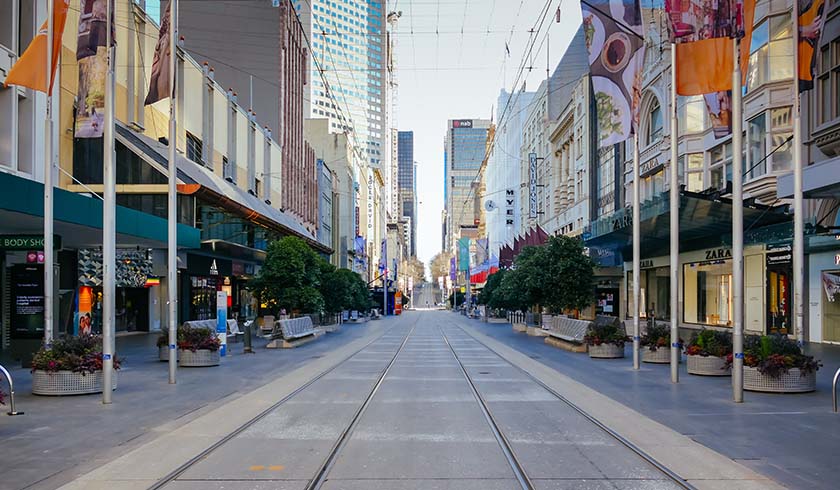How did Sydney and Melbourne retail markets respond to pandemic woes?
Short-term stability in Sydney and Melbourne’s retail markets is expected over the coming months, as the two capital cities strive to stay optimistic.

Herron Todd White’s (HTW) latest Month in Review acknowledged that extended lockdowns in 2021 and the impact of the Omicron variant at the outset of 2022 raised serious concerns in the retail sector of the nation’s key capital cities.
Since 60 per cent of all national property transactions transpire in these two big markets, their retail market performance affects the overall behaviour of Australia’s real estate market, the report said.
Sydney
For Sydney’s rental market, HTW director Scott Russell said they “are seeing a significant lack of demand, reduced sale listings and increased vacancy in most areas”, even for normally stable tenants like cafes and restaurants and those in the CBD.
To soften the blow of lockdowns, “increasing incentives and lower rental rates” are being offered for poorly performing retail properties, according to Mr Russell.
“Poorly performing properties include nightclubs, fashion and smaller local retail shops in unestablished areas, anything that is unconventional, and secondary suburban shops that are oversupplied,” the director said.
For the retail investment market, it saw an increase in demand for high-quality investment properties, such as fully leased retail properties, as investors took advantage of low-interest rates to strengthen their portfolios.
However, Mr Russel said, “only those with strong lease covenants have profited”.
Investors are favouring businesses that “performed well throughout the pandemic, such as medical uses and pharmacies”, noted Mr Russell, because assets with these types of tenants offer “consistently tight yields” for a solid investment.
Investors who are looking to capitalise on the Sydney market are advised to watch out for “new residential development, which will naturally see increases in demand for local retail”.
Melbourne
HTW property valuer Nathanial Ramage reported that Melbourne’s retail sector bore the brunt of a surge in Omicron cases at the start of the year, like Sydney.
To provide continued support to small-business owners under financial pressure, the Victorian government has extended the Commercial Tenancy Relief Scheme until 15 March.
According to the state’s Business Victoria, the scheme will be “available to tenants with an annual turnover of $10 million or less” and who have experienced a 30 per cent decrease in turnover as a result of COVID-19.
Mr Ramage explained: “Landlords will be required to provide continued proportional rent relief in line with a reduction in turnover.”
For example, if a tenant’s turnover is 40 per cent lower than it was before the pandemic, the tenant could only be charged 40 per cent of their rent. At least half of the balance would be waived, and the rest would be deferred. The rent increase freeze will also be maintained.
To attract tenants, Mr Ramage reported of landlords offering flexible leasing terms, which are sufficient to cover operating costs, while providing options for market review “should the leasing market improve”.
And, if despite all these schemes, renters and landlords are still unable to reach an agreement, the Victorian Small Business Commission will continue to provide mediation services, and the eviction moratorium will remain in effect, stated Mr Ramage.
“Landlords will not be able to lock out or evict tenants without undertaking mediation through the Victorian Small Business Commission.”
Finally, Mr Ramage said the Melbourne retail investment market is likely to see mixed outcomes across segments, with properties for essential retail and service tenants remaining stable.
Low-interest rates remain attractive, which is why, Mr Ramage explained, “we are expecting to see continued purchasing activity from owner-occupiers purchasing premises instead of leasing”.
